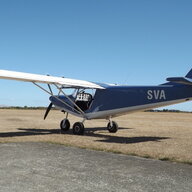I hate to be picky, but I also hate the casual misinformation, and don't understand the need for exaggeration in this case. Or maybe the problem is the growing inability to read past any first sentence?
Sabrina started building N5886Q in March of 2006 at age 12 and she completed it by October of 2007. It was then disassembled, painted, and transported to KARR. It was certified as airworthy E-LSA on January 11, 2008 and flew its maiden flight four days later, on January 15th. It was kept in Phase I flight testing for Sabrina's first U.S. solo which she conducted in it on August 24th of 2009 at age 16.
Or maybe this:
According to Pasterski’s account on her web site, her grandfather gifted her a Cessna 150 airplane for her 10th birthday. Over the next few years, Pasterski got help from a mechanic and others in rebuilding the plane’s engine and constructing the frame for a new aircraft. She told the Chicago Tribune in a 2015 interview that she first went up in a plane at age 9:
The first time was a discovery flight (which typically includes both instruction and a quick time in the air with a flight instructor). It was basically along the shoreline. That was really gorgeous. It’s a nice feeling. It gives you a different perspective; everything’s so much smaller.
Then, two days before her 14th birthday, Pasterski flew the plane by herself in Canada. She created a video montage to document her work on the project.
Stephen Hawking never followed her on Twitter: neither of them have or had Twitter accounts.
And there is no record of anyone at Harvard calling her the next Einstein.
-------------------------------------------------------------------------------------
However, someone of extraordinary abilities, no question about that.



